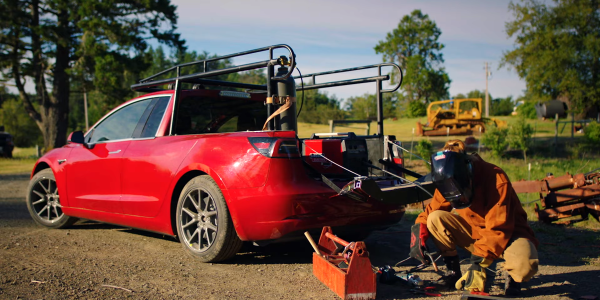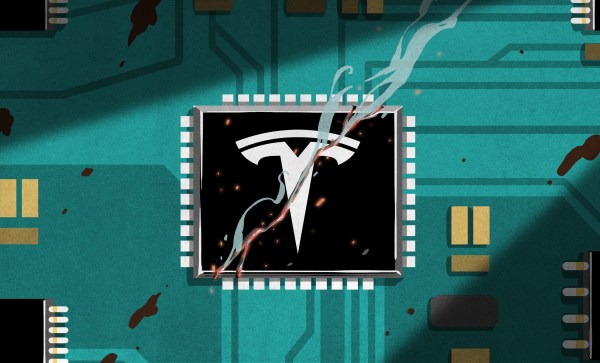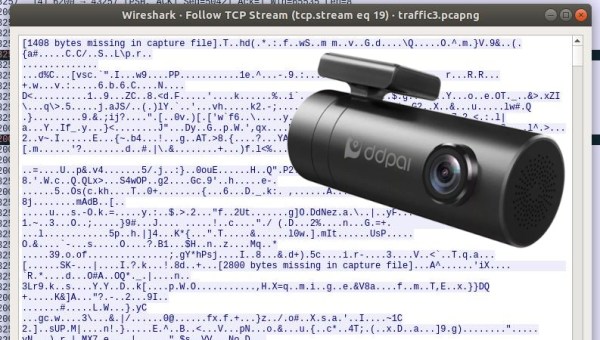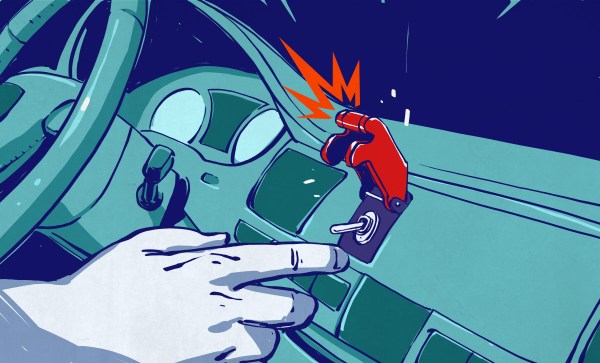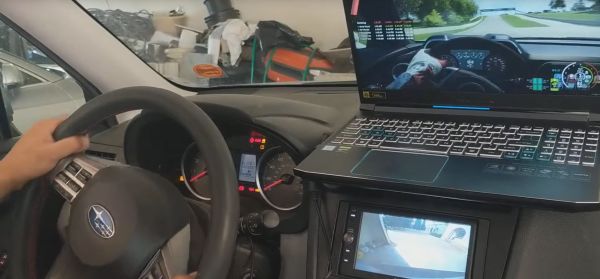The renowned inventor of useless robots [Simone Giertz] has outdone herself this time. She, along with a team of engineers featuring [Rich Rebuilds], [Laura Kampf], and [Marcos Ramirez], recently decided to convert a Tesla into a pickup truck, and make a video along the way, all while salvaging what remains they can of the back of the car and making the final product roadworthy. Yeah, this is a couple weeks old now, and yeah, it’s kind of a commercial, but really: [Simone Giertz] and Co. rock.
In her vlog of the experience, the team starts by gutting out the interior of the car in order to find out the weight distribution and form of the outer frame. Essentially, in order to create the pickup truck, a portion of the back of the car needs to be removed, with additional beams and support welded in depending on the consequent structural integrity. With a sawzall and angle grinder, the top portion of the frame is cut and taken out, but not before a worrying glance brings about the realization that the car needs exterior support during its modifications.
After the cushions, glass, wiring, and all other accessories are removed, they install a truck bed from another sacrificial pickup truck, as well as a roof rack to complete the look. Amidst the deconstruction and reconstruction, there are moments when the car encounters a “Safety restraint system fault” or when the team accidentally lines the inside of the car with fiberglass right before shooting their video. Between complaints of the different clip sizes used and the clear time pressure of the project, it’s a funny and informative look into a pretty unique car mod.
The final commercial they made of their Tesla-pickup hybrid, dubbed Truckla, is available on [Giertz]’s YouTube channel.

